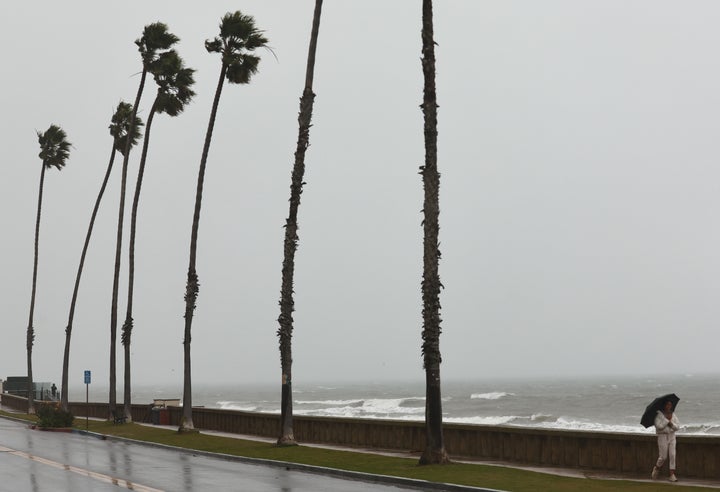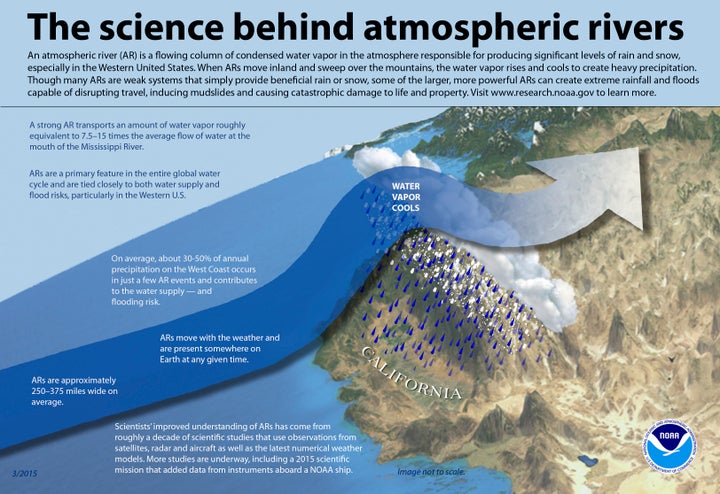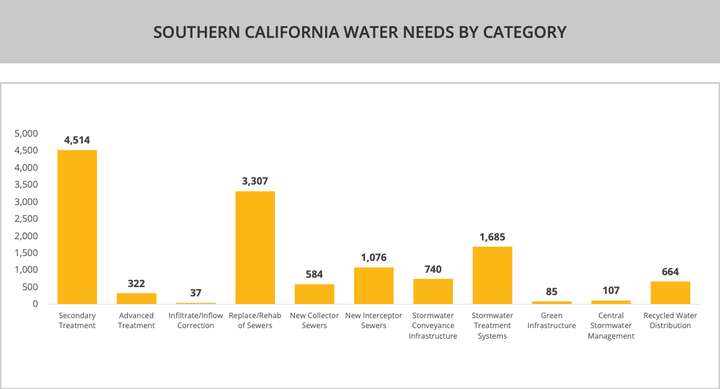
A rare weather event that brought catastrophic flooding and wind gusts exceeding 100 miles per hour to California has already incapacitated much of the state — including two of the richest and most developed parts of the country, which still lack the infrastructure needed to withstand such extreme weather.
In the nation’s high-tech hub of Northern California, nearly 1 million households suffered blackouts Sunday evening, according to Pacific Gas & Electric. More than 456,000 remained without electricity, including nearly a quarter-million in the San Francisco Bay Area, as of 8 a.m. local time Monday. Including those outside PG&E’s coverage area, more than 500,000 people statewide were still in the dark, data from the website PowerOutage.us.
In Southern California, home to the country’s second most populous city and the biggest port through which goods from Asia flow, federal weather forecasters put nearly 14 million people on notice for a rare “high risk” of flash flooding. The National Weather Service warned early Monday that the risk of landslides and flooding in the Santa Monica Mountains and Hollywood Hills area had become, as described in all capitals, an “EXTREMELY DANGEROUS SITUATION.”
Even during normal conditions, rain can render the oil-slicked freeways crisscrossing Los Angeles slippery and risky to drive, dramatically slowing movement in the U.S.’s notoriously car-dependent metropolis. Despite the potential risks and widespread power outages, no evacuation notices have been issued, and schools remained open on Monday.
The storm is expected to continue through Tuesday.
The weather results from the “atmospheric river,” a long, narrow band of vapor that can carry more water than the Mississippi River and occurs particularly in the U.S. West Coast. As the planet grows hotter, one 2020 study in the peer-reviewed journal Science Advances found that rainfall in California could surge by between 10% and 40%.

As it is, California’s roads, power grid and drinking water systems have not kept up with the pace of population growth. The state has recognized this problem for well over a decade. But the American Society for Civil Engineers (ASCE) warned that investment was not reaching the billion-dollar levels needed and public funding mechanisms were “insufficient” to deliver the changes needed, particularly on water infrastructure. The ASCE gave California’s infrastructure a C grade in its 2019 ranking.
While much of the focus on California’s water problems has in recent years zeroed in on how drought was depleting freshwater resources, the infrastructure to deal with heavy rainfall ranks as one of the biggest shortfalls, according to a report published last month by RebuildSoCal, a union-backed effort to push for overdue public upgrades.
Fixing sewers and adding new drains and systems to channel stormwater away from flood zones together make up the biggest problem for water infrastructure in densely-populated Southern California. But unlike drinking water and wastewater systems primarily funded through ratepayer fees, cities and counties typically pay for stormwater upgrades out of general funds raised through local taxes.
“This often leads to severe underfunding, hindering necessary maintenance and upgrades,” the report concluded.
Overall, investments in the region’s infrastructure fell by 37% between 2010 and 2020 even as the number of containers passing through the ports of Los Angeles and Long Beach skyrocketed and the effects of climate change dramatically increased.

PG&E is in the process of burying more than 1,200 miles of power lines. The company filed for bankruptcy in 2019 after its power lines were found responsible for sparking one of California’s deadliest wildfires, and regulators in the state approved PG&E’s request to move transmission lines underground between 2023 and 2026.
A spokesperson for the company declined to comment on whether buried lines would have maintained electrical output during the current storm. (Ahead of the storm, however, PG&E urged customers in Northern California to bring patio furniture inside to avoid chairs or tables blowing in the wind and colliding with power lines.) But a 2022 Princeton University study found that strategically burying just 5% of power lines near main distribution points would halve the number of residents who suffer blackouts during hurricanes and heat waves.
Those fixes alone are unlikely to sufficiently prepare the most populous state for the new extreme-weather records already routinely set and broken each year. But the damage seen during this week’s storm illustrates how decades of ignoring the threat of climate change makes life more challenging and more dangerous for people living in places where extreme weather is becoming more and more common.
California has been among the most progressive states on policies to cut back on planet-heating emissions by incentivizing the switch to electric vehicles, banning fossil-fueled heating in new buildings, and building solar panels and wind turbines to generate electricity.
But the cost of simultaneously funding a transition away from what’s causing climate change while adapting to the warming that’s already occurred exacts a heavy toll even on a state so big and wealthy the gross domestic product would, as its own country, rank in the top five largest economies.
Faced with rising deficits, however, Democratic Gov. Gavin Newsom proposed slashing California’s budget for climate programs by 7% this year.
President Joe Biden’s series of infrastructure-spending laws are beginning to take effect. But the unprecedented trillions the legislation made available amount only to what economists at the left-leaning Roosevelt Institute called a “down payment” on the overhauls needed to deal with climate change.
